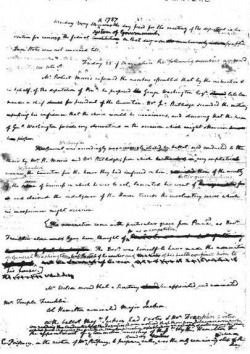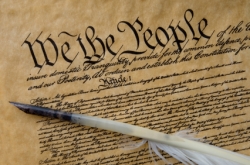The Three-Fifths Compromise
The Revolution: The Great Compromise
In the Philadelphia Convention of 1787, the Articles of Confederation were discarded and a new constitution for the United States of America was ratified. One of the major problems the delegates of the states faced in creating this document was on what terms of representation in Congress and form of legislature.
- Would each state's chosen representatives be numbered according to population? Or should every state have an equal amount?
- The large states wanted representatives to be according to population.
- The smaller states wanted equal representatives for each state
- The delegates took sides in the debate. This division marked out a line between states that wanted equal representation and those that supported representation by population.
- After long hours of men yelling at each other, the delegates came to a compromise:
- A bicameral legislature was formed, consisting of a House of Representatives and a Senate.
- The House's members were apportioned to population, where every citizen had an equal say.
- In the Senate each state had equal representation.
- By creating the House, the delegates were then able to proceed into further argument over how population would be represented.
- This would eventually lead to the three-fifths compromise.
The United States' bicameral legislature was an innovation. While England at the time also had a bicameral legislature, their government differed greatly. For instance,
- The two sects of the legislature are called the House of Lords and House of Commons. This divides the monarchs from the general population of civilians.
- The Queen has almost no power in the government. She is just a consultant for dissolving Parliament. In America, the President is capable of creating and vetoing laws.
- On the other hand, America had no monarchy and did not divide "Lords" from "Commons".
- The bicameral legislature of the United States presented the unique values of American society: all people and states would be represented equally and have a say in the politics of the nation.
- Each representative would express the voice of the same number of civilians, giving every individual some power in the legislature.
- The fathers of the Constitution were sparking a revolution by giving such power to the people.
- They were further defining the democratic values of America.
- America's governmental system itself was an innovation for overcoming the disbelief that a democratic republic could not function in and control a such a large country.
- Great Compromise contributes to that innovation.
- But creating a bicameral legislature was merely the beginning of writing the Constitution and forming the nation.


